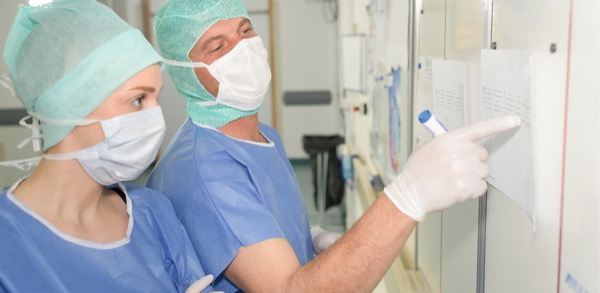San Diego—A potential strategy to reduce the astronomical costs of the OR, where one minute can fetch up to $133, is to integrate predictive analytics, according to a presentation at the 2021 OR Business Management Conference.
“The goal of surgical operations is to improve outcomes while also improving efficiency and reducing cost,” said Shikha Bhatnagar, the CEO of Healthinsights.ai, an artificial intelligence (AI) company that provides prepackaged analytics products for the healthcare industry and associated services.
To help offset the cost of an inpatient stay, which is 2.5 times higher for surgical cases than nonsurgical cases, advanced analytics can “enable desired surgeon workflows and decisioning at the time of need, in real time,” she said.
Among the most important areas to evaluate are first-case delays, turnaround times, inefficient scheduling practices, underuse of blocked time, and supply cost comparisons of procedure and surgeon.
According to Ms. Bhatnagar, the five levels of analytics are:
- Level 1: manual input and manipulation of data
- Level 2: manual data extracts from electronic health records and running metrics in Excel
- Level 3: integrated data sourcing and building of basic reports/dashboards
- Level 4: mastering retrospective reports with data integration, plus moving to predictive analytics
- Level 5: all of the above, plus building and deploying predictive surgery models to forecast block usage, surgical volume and more, and then delivering those insights to administrators, surgeons and decision makers
“You need to have driven-data conversations,” Ms. Bhatnagar said. “For example, if a particular service line is not using its block, talk to them. Perhaps Fridays can be eliminated if nothing is scheduled. Physicians love it because they are able to save time and use their blocks more efficiently.”
One hospital was able to save about $4 million per year by block time reduction alone. “The biggest challenge is trusting the data,” Ms. Bhatnagar said. “With the models running behind the scenes, you are able to go back to the surgeons and administrators to give them an early warning of how likely a particular block will be used next month, based on the previous data and the observed trend.”
The surgeon can then take a deliberate action, such as releasing his block, so another surgeon can use it instead. “We provide an actionable insight to our surgeons,” she said.
“We do not believe that a machine can fix things,” Ms. Bhatnagar said. “We believe in humans interacting with the data to remedy a problem. But data can only take you up to a certain point. A lot of cultural change is required as well.”
A common mistake in healthcare is to centralize the data from multiple local clinical processes, according to Bruce Ramshaw, MD, the founder and managing partner of, and a shareholder in, CQInsights PBC, a healthcare data analytics and consulting company headquartered in Knoxville, Tenn.
“Centralized data generates averages but lacks insight,” he said. “The data should be decentralized into context for each whole definable process in each local clinical environment. Many subpopulations, like minorities, are not well represented by averages and may suffer harm from algorithms produced using centralized data sets.”
Dr. Ramshaw said the small clinical team that actually provides the surgical care should determine what data points and outcome measures are collected in each local clinical environment. “The same team should also apply insights gained from each analysis to improve outcomes that are measured,” he said.
However, because real-world data “is messy, the data requires regular cleansing and feedback loops working with the front-line clinical team in each local environment to assess and improve the quality of the data,” Dr. Ramshaw said.
Dr. Ramshaw is a member of the editorial advisory board of OR Management News.
This article is from the March 2022 print issue.



